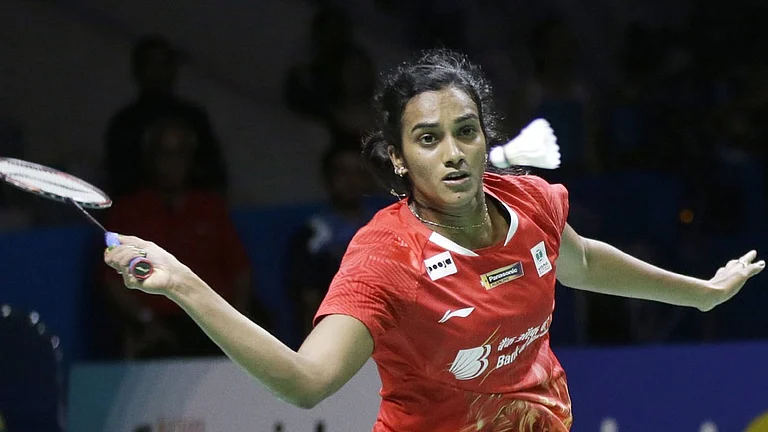The Hindi heartland is the politically most significant region of the country encompassing nine states with 225 or over 40 per cent of the total Lok Sabha seats. The road to Delhi, they say, leads from Lucknow. One of the main reasons behind the Congress’s decline nationally is its continuous dismal performance in politically the most significant region. The Congress electoral tally has been continuously taking a hit in the region and the party hardly looks prepared to take up the challenge. The party managed to win 79 out of the 225 seats in 2009, which took a huge dip in 2014 as the party ended up with just eight seats. If this was bad, the worst was yet to come. The tally reduced further from eight seats to just six in 2019 with the likes of Rahul Gandhi losing his traditional bastion of Amethi.
Speaking to Outlook on the party’s position in these states, Congress chief Mallikarjun Kharge observes, “We are well aware that we have lost some ground over the years in states like Bihar and Uttar Pradesh. And we tried to win back the confidence of the people; for example, we won 21 Lok Sabha seats in 2009 in UP. At the same time, we won Chhattisgarh and Madhya Pradesh in 2017 after 15 years. Another fact is that the BJP destabilised our government in Madhya Pradesh using money and state agencies like the ED and IT. We intend to rebuild our party in both these states with new vigour.”
The party faces several challenges in the region. First is the dominance of regional parties like the Rashtriya Janata Dal (RJD) in Bihar, the Aam Aadmi Party (AAP) in Delhi and the Samajwadi Party (SP) in Uttar Pradesh, which eats into the vote share of the Congress. The regional parties have, in fact, emerged as an alternative to the Congress, taking away its position as the main challenger to the BJP in many states. The party’s job needs to be redefined not only to challenge the BJP but also to establish itself as the principal opposition.
ALSO READ: Bharat Jodo Yatra: History In The Making
“This region gets affected most by the national narrative. Leaders from non-Hindi states are still able to invoke regional sentiments to push back against the BJP, be it Mamata Banerjee, M.K. Stalin or KCR. But there is no leader who can do that as effectively in the Hindi heartland,” says political analyst Aditya Menon.
Second, the Congress’s inability to stem the infighting in many state units has become a constant feature and cause of embarrassment for the grand old party on several occasions. From the Gehlot–Pilot fighting in Rajasthan to a series of resignations in Uttar Pradesh, the party looks clueless on how to control its leaders. Not so long ago, the party lost its government and Madhya Pradesh to the BJP due to this factor alone.
ALSO READ: Bharat Jodo Yatra: Poised To Make A Mark
The absence of a credible leadership in the states like Uttar Pradesh, Bihar, Delhi and Jharkhand has only led to diminishing public trust in these states. The states where the Congress has local leadership, the party is doing well, at least in assembly elections, for instance, in Chhattisgarh, Rajasthan or Madhya Pradesh. The top leaders of the party seem to have lost that connection in the Hindi heartland. Rahul Gandhi shifting to Wayanad and losing from Amethi was a sign of this decline.
Another factor that has damaged the party’s prospects in the region is its failure to effectively counter the BJP’s communal narrative. The party often finds itself on the horns of a dilemma, for staying quiet would create distrust among the minority community and lose whatever support it is getting in terms of votes and opposing it would result in displeasing the majority voters the party is hoping to win back.
The Congress does no longer have any particular caste or group as its vote bank identifying themselves with the party. If the SP has Muslims and Yadavs, the Bahujan Samaj Party has Dalits and the BJP has upper caste and non-Yadav OBCs as their vote bank, which provide them an edge over the Congress, the party has to satisfy itself with residual votes, if any, from all these sections.
The macro approach is another hindrance in its path to revival. What the Congress needs at the moment is to focus on micro issues that directly affect the day-to-day life of the locals as relying purely on national issues has not helped the party. It needs an approach like that of the AAP leader Arvind Kejriwal in Delhi—free electricity, healthcare and education, among others. People in Delhi rejected the AAP in both 2014 and 2019 parliamentary elections, but the same people voted for the party in assembly elections because of these schemes that directly benefited them.
The biggest embarrassment to the party in recent times has come from leaders like Captain (retd.) Amarinder Singh, Jyotiraditya Scindia, Ghulam Nabi Azad, Jitin Prasada and Major (retd.) Vijay Singh Mankotia, among others, who have switched their allegiance. In fact, there is a long list of such leaders who served at the highest level of the party but have deserted it to join the BJP or other outfit. Some even formed their own party. The inability of the Congress high command to rein in and convince its own leaders has not gone down well with the people.
Centralisation of power in the Congress has often resulted in delayed decisions, with the party mostly showing to be reactive rather than proactive. Things that were supposed to be decided immediately could not be decided without the consent from the top, leading to missing on several opportunities.
The ‘Bharat Jodo Yatra’—an exercise aimed at reclaiming the lost ground—has thus far received a good response from the people. But the real test of the yatra will be when it enters the Hindi belt. Whatever has worked for the party in the rest of the country does not seem to resonate with the people of this region. “Sometimes, even the right political decisions by the party have not paid dividends. And that is part and parcel of politics. But we are going to work on it. A feedback mechanism is being put in place. UP has a new PCC president and for the first time we have appointed a region-wise president also in the state. Different states will have different strategies. We will take appropriate decisions as per the local sentiments and the will of the people,” says Kharge.
However, it will need more than that. What the party requires is a completely different narrative that can strike a chord with the people of the Hindi belt to help it regain the lost ground.
(This appeared in the print edition as "In Need of a Narrative")
(Views expressed are personal)
Syed Kamran Husain is an independent journalist





















